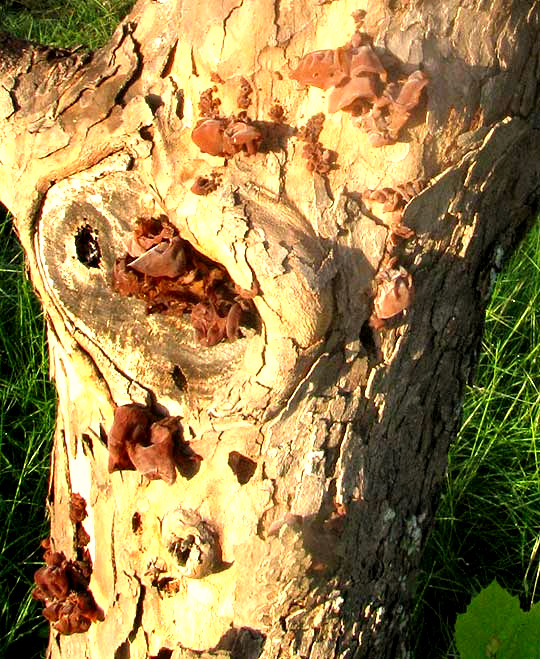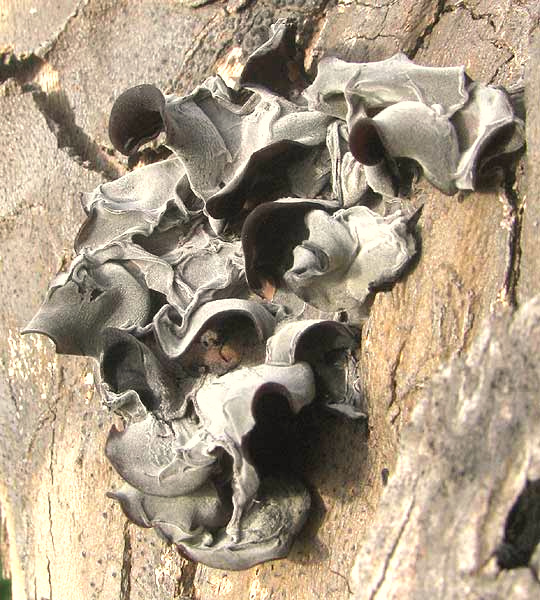Excerpts from Jim Conrad's
Naturalist Newsletter

from the May 12, 2013 Newsletter issued from the Frio Canyon Nature Education Center in northern Uvalde County, southwestern Texas, on the southern border of the Edwards Plateau; elevation ~1750m (~5750 ft); N29.62°, W99.86°; USA
JELLY EAR FUNGUS
Many folks don't pay attention to the fact that each species of tree they plant around their houses has its own specific needs. Someone who once lived in the cabin I'm occupying was like that, for they've planted several garden flowers, bushes and trees that might make sense out East where it's much rainier than here, but not in our area at the edge of the vast Chihuahuan Desert. For example, they planted Sycamores around the house, even though in nature Sycamores usually occur next to streams. Consequently two summers ago when our long-term drought was especially bad, the Sycamores died. The trunk of one still standing leaflessly beside the cabin now is being colonized by the special kind of brown, gelatinous fungus shown below:

A close-up of a cluster of the fungus's spore-producing bodies is shown at the top of this page. Two days of dry, hot wind after the above picture was taken, the same cluster was photographed, and you can see how its appearance had changed by then below:

Soon after that picture of the dried-out fruiting bodies was taken, a small shower came through, and the next morning the same fungus was brown and jelly-like again. This is a species able to "go into suspended animation" when it gets dry.
But the species is common not only in arid lands but also in temperate regions worldwide, where it grows on both dead and living wood. It's AURICULARIA AURICULA-JUDAE*, which, when I was a kid, mushroom field guides matter-of-factly identified as Jew's Ear Fungus, reflecting the binomial first published in 1888 (the Latin ANGIOSPERMARUM meaning "Judas's ear"), but which in our more politically correct times now usually is called Jelly Ear.
Whichever name we use, this is a good fungus to know not only because it's so widely occurring and easy to identify, but because it's edible and medicinal. The Chinese use it in their hot and sour soup. The fungus doesn't have much taste of its own but it soaks up the flavor of whatever it's cooked with. In America's pioneer days sometimes the moist little "ears" were covered with syrup, let to dry, and eaten in the winter as candy.
Both in the Orient and the West Auricularia ANGIOSPERMARUM has been used medicinally in various ways. In China it was used especially against hemorrhoids and as a general body strengthener. In fact, modern research finds that extracts of the fungus display certain anti-tumor, hypoglycemic, anticoagulant and cholesterol-lowering properties. Mushroom guru Tom Volk at the University of Wisconsin mentions cases of internal bleeding from particularly sensitive people who accidentally ate too much Chinese hot-and-sour soup combined with stir-fry containing this fungus. There is some evidence that regular ingestion of Auricularia in small doses can help prevent strokes and heart attacks.